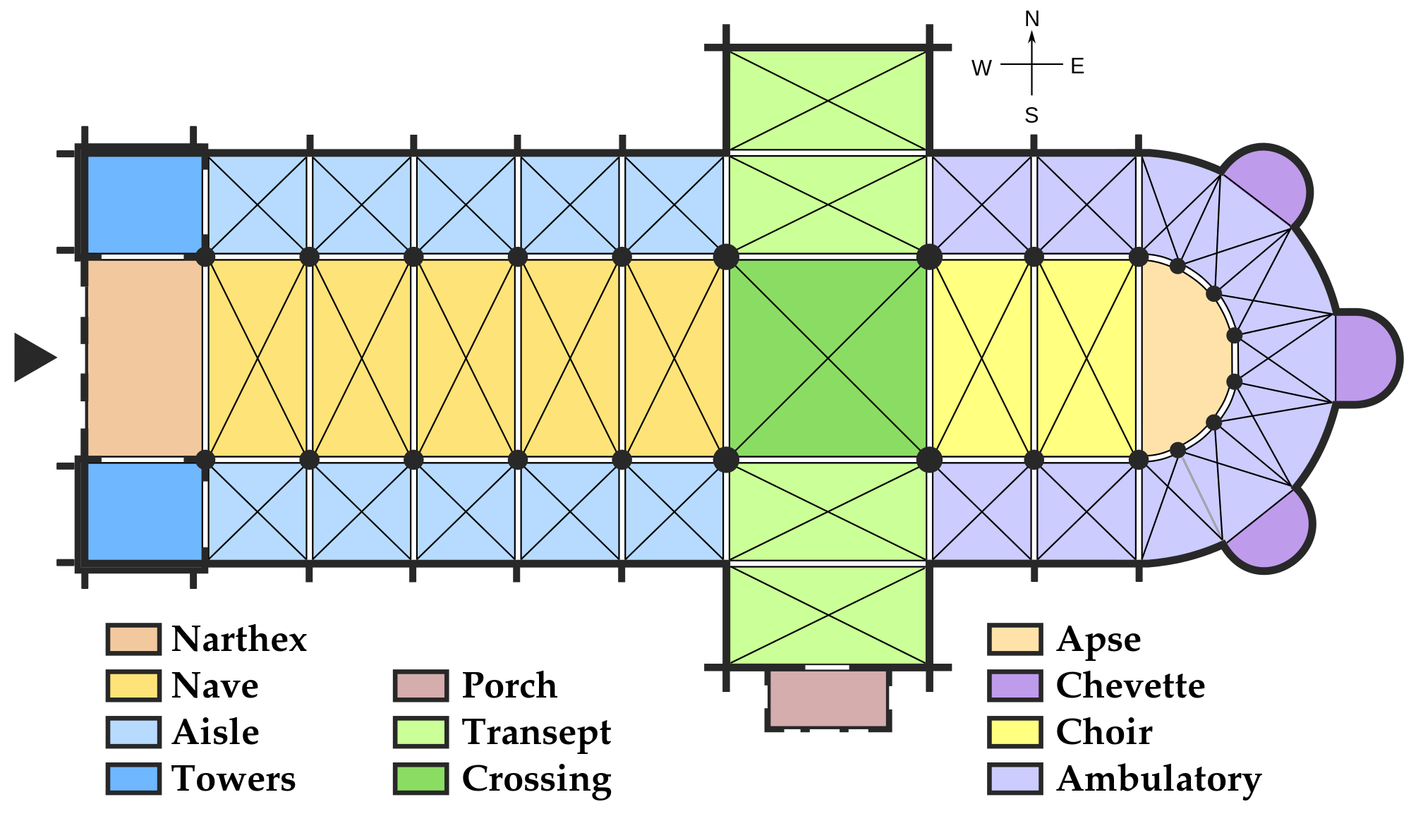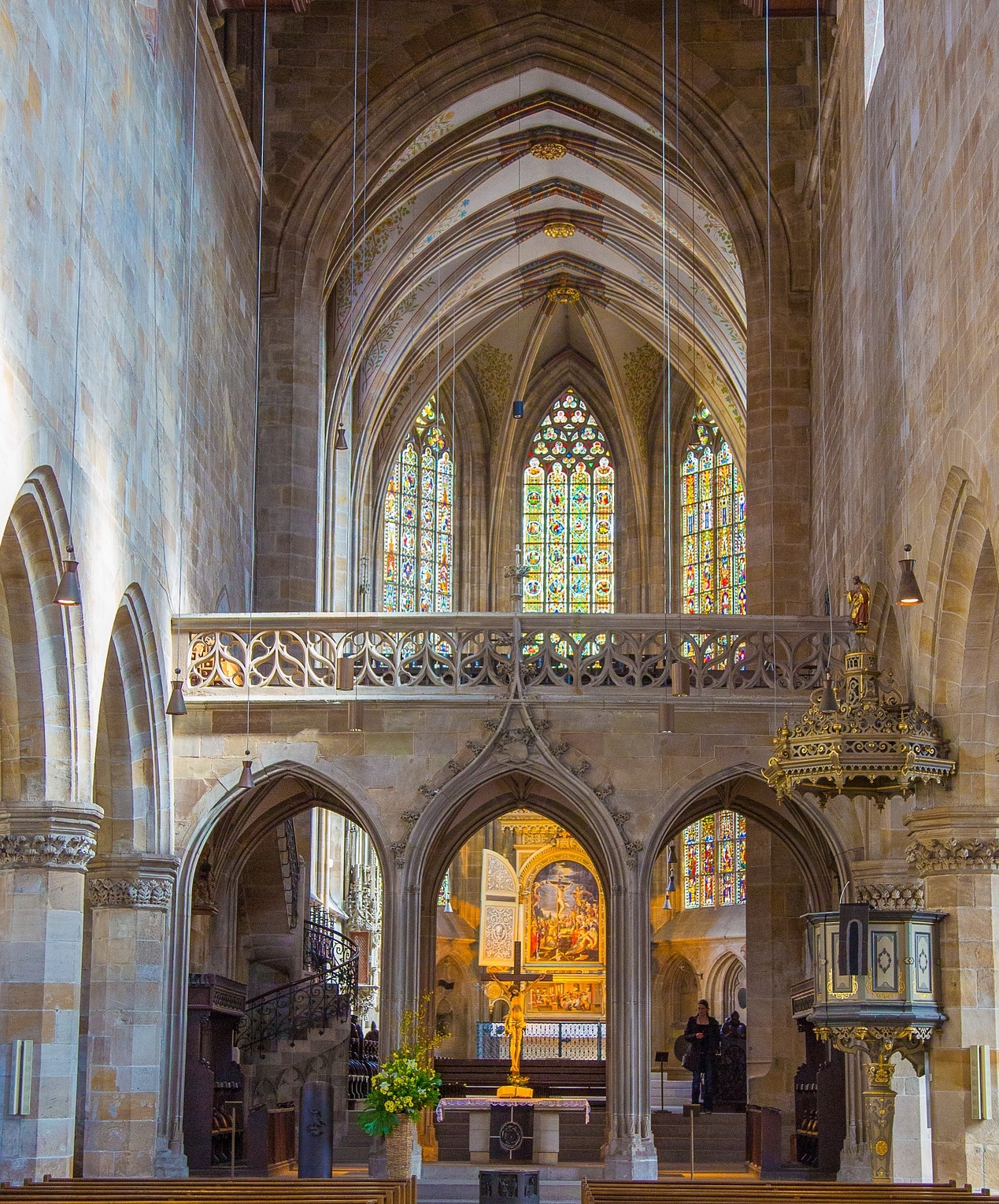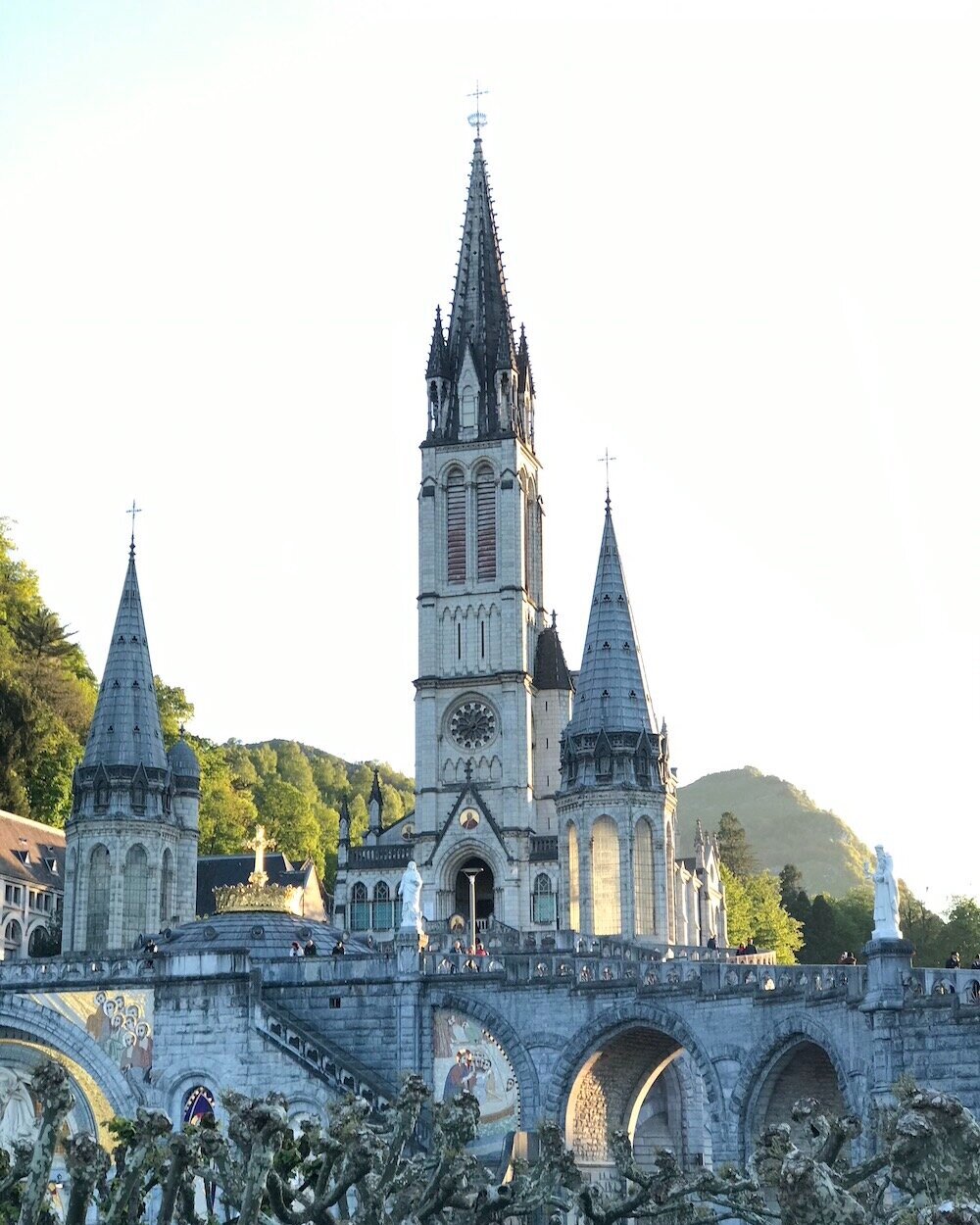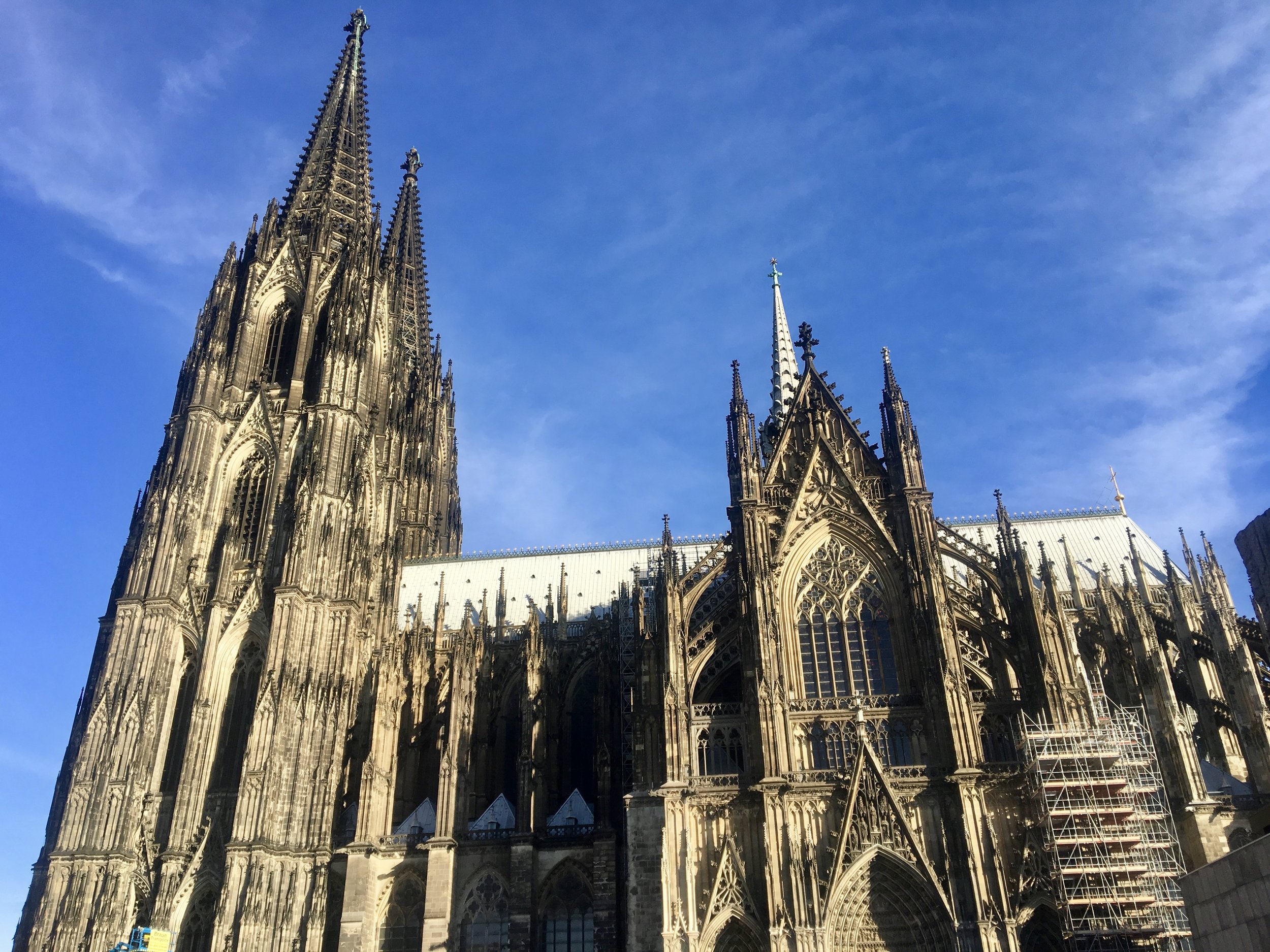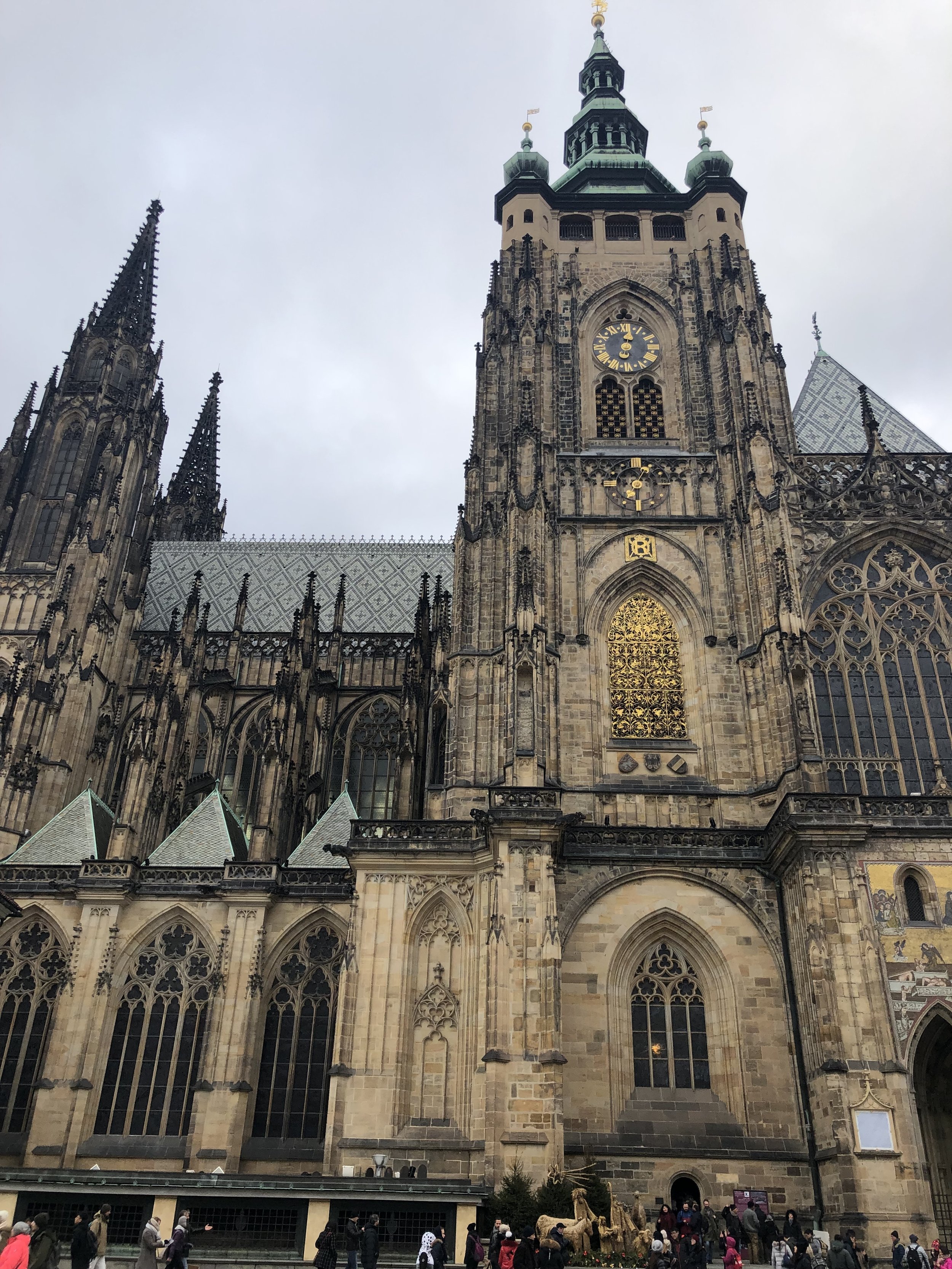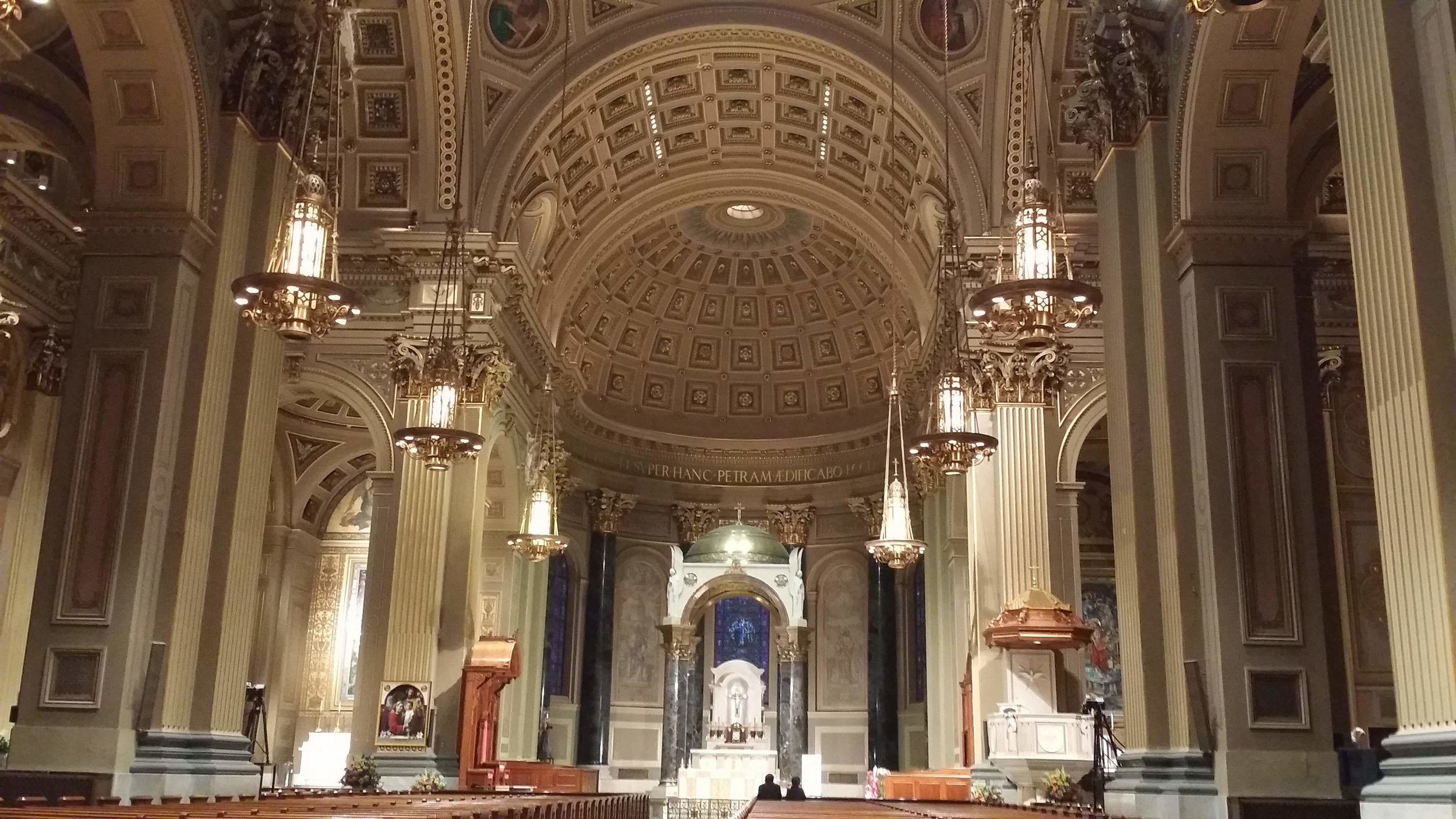"It became obvious why Catholics had built such beautiful cathedrals and churches throughout the world. Not as gathering or meeting places for Christians. But as a home for Jesus Himself in the Blessed Sacrament. Cathedrals house Jesus. Christians merely come and visit Him. The cathedrals and churches architecturally prepare our souls for the beauty of the Eucharist."
-- Allen R. Hunt, Confessions of a Mega Church Pastor
Architectural Elements of the Gothic Cathedral
The first Cathedrals were built in the medieval times perhaps as far back as the ninth century. Over time different architectural styles emerged, but most contained similar interior functional elements. The Romanesque, Gothic, and Renaissance styles are the oldest and most common in Europe. For purposes of discussion, we will focus on the floor plan of a prototypical Gothic style cathedral, as shown in the diagram below. The table briefly outlines the function of each section of the cathedral.
Symbolism of Heaven on Earth
The Cathedral is a place of Catholic worship and the seat of the Bishop of the diocese, but it is also a symbol of Paradise. In Medieval times, it was the centerpiece of the community, representing hope and refuge. Refuge from the struggles and difficulties of human life; hope of the promise of Heaven while in the presence of God. Its very structure should make men yearn for Heaven. Cathedrals were built to evoke that feeling through their structure and art, both rich in symbolism. Shall we begin our journey through the Gothic cathedral?
Large, decorative doors mark the entrance to a cathedral. The narthex or vestibule, which is essentially the foyer of the cathedral, is dark compared with the outside. It gives the worshipper a moment to become settled and to prepare for the journey ahead. Holy water is present for a blessing prior to entering the main part of the structure. What awaits us on the other side of the narthex is an awakening of the soul. Upon entering the second set of doors, we are subjected to dim streams of filtered light. As we move along the nave toward the altar, our eyes adjust and the light becomes brighter, showing how if we stay on the path in our spiritual journey as Catholics we will become closer to God. The journey from darkness to light symbolizes that God is the light that overcomes the darkness. Traveling down the nave should focus us on our journey on earth from sin to reconciliation with God and the journey home to Heaven.
Once we feel equilibrated to the light, our eyes are drawn upward. The tremendous verticality of high vaulted ceilings allows man to feel the mystical upward pull of Heaven. The ceilings are supported by lateral walls, which represent the Old and New Testaments by their decorations. The interior columns positioned down the main section, or nave, of the cathedral support the ceiling and are symbolic of the Prophets and the Apostles. During the Renaissance period, cupolas were added toward the center of the cathedral above the altar to represent Christ at the center of his church.
Much of the architectural enhancements in the Gothic period involved ways to not only increase the verticality of the cathedral, but also to increase the number of windows that could be put within the walls so that the interior light could be maximized. The balance between light and structural stability was accomplished with not only the interior support of pillars, but also with the exterior use of flying buttresses that gave the building lateral support so that the walls could be less dense. They were designed to give each Gothic cathedral a unique sense of ornamentation.
The open walls were filled with windows made of stained glass. This had two purposes. First, light that enters through the stained glass is filtered and less harsh to our eyes than plain daylight. Second, the stained glass gave an opportunity to relate biblical scenes and symbolism to educate the attendees. In the medieval times only the rich and the religious could read, so the windows gave each cathedral a unique opportunity to catechize their flock. Gothic cathedrals also have giant circular stained glass windows on the front and lateral façades called the Rose windows. The beauty of any rose window comes from its unique complex geometry and character that gives it a sacred, infinite and harmonious quality that can awe and mystify the viewer.
Another great symbol of the cathedral is its cruciformity; it is built in the shape of a cross to symbolize the crucifixion of Jesus. This occurs when the transept, which forms the crossbeam, intersects the nave, which forms the upright portion. The transept is the area in front of the altar and choir that separates the worshippers from the clergy. The altar is in the apse at the most eastern point of the cathedral. This again is symbolic. Some say it goes back to the Jewish tradition of praying toward Jerusalem. Others contend that it is based on the orientation of Christ's Second Coming which would be on the clouds coming from the East:
"For as the lightning comes from the east and flashes as far as the west, so will be the coming of the Son of Man." [Mt 24:27, NRSVCE].
Whatever started the tradition, medieval Christians knew that they were praying in the direction of the rising sun to Jesus, the light of the world, for salvation.
Other features of the cathedral that can be explored on a visit include small chapels dedicated to saints around the perimeter of the apse, crypts underneath the altar for important tombs, labyrinths hidden on the floor, gargoyles peering down from the towers and much more. To learn more about the beauty of the cathedrals, consider reading Heaven in Stone and Glass by Robert Barron and go visit a cathedral with a new perspective.
Other features of the cathedral that can be explored on a visit include small chapels dedicated to saints around the perimeter of the apse, crypts underneath the altar for important tombs, labyrinths hidden on the floor, gargoyles peering down from the towers and much more. To learn more about the beauty of the cathedrals, consider reading Heaven in Stone and Glass by Robert Barron and go visit a cathedral with a new perspective.



